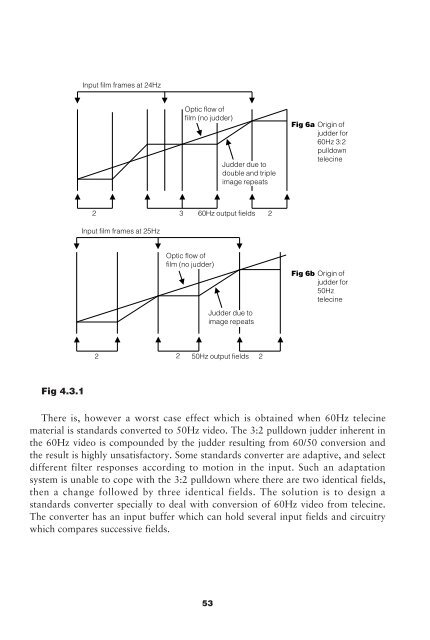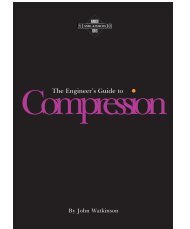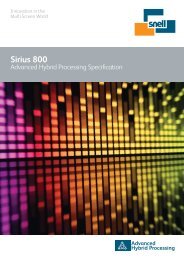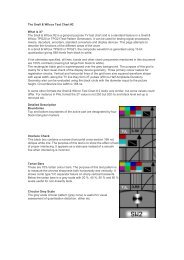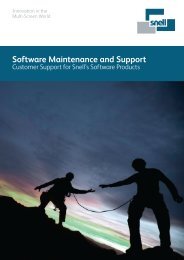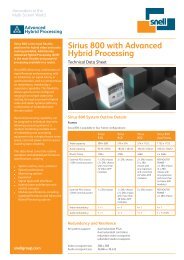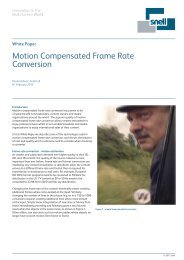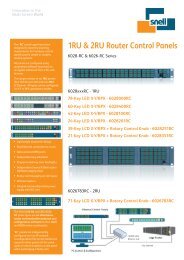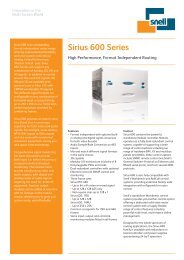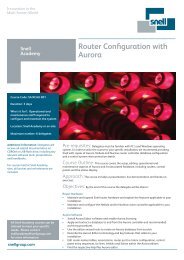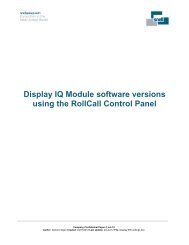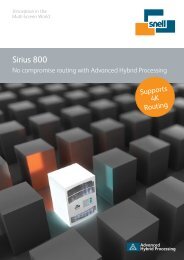The Engineer's Guide to Standards Conversion - Snell
The Engineer's Guide to Standards Conversion - Snell
The Engineer's Guide to Standards Conversion - Snell
You also want an ePaper? Increase the reach of your titles
YUMPU automatically turns print PDFs into web optimized ePapers that Google loves.
Input film frames at 24Hz<br />
Optic flow of<br />
film (no judder)<br />
Judder due <strong>to</strong><br />
double and triple<br />
image repeats<br />
Fig 6a Origin of<br />
judder for<br />
60Hz 3:2<br />
pulldown<br />
telecine<br />
2 3 60Hz output fields 2<br />
Input film frames at 25Hz<br />
Optic flow of<br />
film (no judder)<br />
Judder due <strong>to</strong><br />
image repeats<br />
Fig 6b Origin of<br />
judder for<br />
50Hz<br />
telecine<br />
2 2 50Hz output fields 2<br />
Fig 4.3.1<br />
<strong>The</strong>re is, however a worst case effect which is obtained when 60Hz telecine<br />
material is standards converted <strong>to</strong> 50Hz video. <strong>The</strong> 3:2 pulldown judder inherent in<br />
the 60Hz video is compounded by the judder resulting from 60/50 conversion and<br />
the result is highly unsatisfac<strong>to</strong>ry. Some standards converter are adaptive, and select<br />
different filter responses according <strong>to</strong> motion in the input. Such an adaptation<br />
system is unable <strong>to</strong> cope with the 3:2 pulldown where there are two identical fields,<br />
then a change followed by three identical fields. <strong>The</strong> solution is <strong>to</strong> design a<br />
standards converter specially <strong>to</strong> deal with conversion of 60Hz video from telecine.<br />
<strong>The</strong> converter has an input buffer which can hold several input fields and circuitry<br />
which compares successive fields.<br />
53


